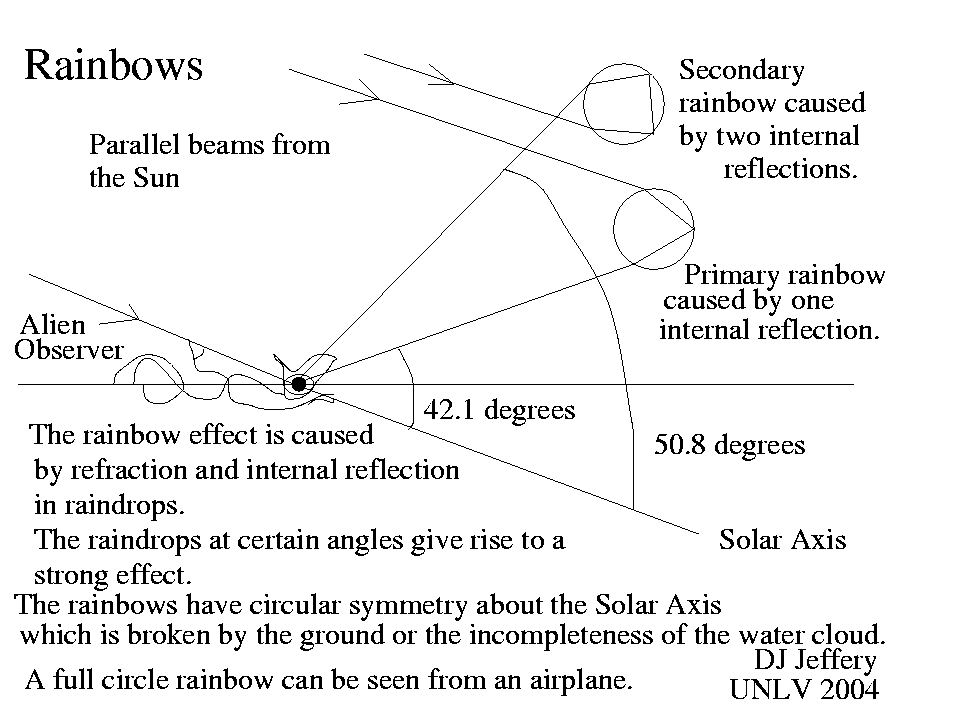
Caption: The formation of the rainbow.
There is a strong focusing effect of the totally internally reflected light in the raindrop at the special angles from the solar optical axis: the average primary angle is 42.1° and the average secondary is 50.8°.
The primary rainbow has one total internal reflection and the secondary rainbow has two.
-
The secondary rainbow is fainter
than the primary rainbow because
there is more light absorption in the longer passage through the
raindrop.
There tertiary and higher-order rainbows formed by 3, etc. total internal reflections.
The tertiary and 4th order rainbows can be observed in nature. Higher order ones exist in theory and can be created in the laboratory to some high order. A 200th order one has been observed in the laboratory (see Wikipedia: Rainbow: Higher-order rainbows).
There are also supernumeray rainbows that can appear inside the primary rainbow (rare) and outside the secondary very rare). These arise from interference effects and are NOT easy to explain at our level.
A supernumeray rainbow is the usual form of the 3rd rainbow of a triple rainbow yours truly thinks.
The primary rainbow (rarely) and secondary rainbow (very rarely) can also become twinned rainbows.
So the focussed light is dispersed and we see it each color coming at us from a slightly different angle from the solar axis.
-
Note the diagram is a cross section.
There is circular symmetry around the solar optical axis.
Thus, a full rainbow would be a circle set on a cone with its apex at the observer.
Full rainbows can be seen from high buildings or airplane.
However, there is another atmospheric effect, a glory which is rainbow-like, but is caused by a different effect and has a smaller angular diameter measured from the solar optical axis. Circular glories are often seen from airplanes. Yours truly probably saw a glory once.
Credit/Permission: ©
David Jeffery,
2004 / Own work.
Image link: Itself.
Local file: local link: rainbow_explication.html.
File: Electromagnetic Radiation (EMR) file:
rainbow_explication.html.